A reader of this blog (Henry) asked how one might find owls, and while I normally will not give specific owl locations because these birds tend to get “loved to death”, for those of you willing to invest the time and effort to learn habitat and habits, I definitely want to help with that educational process! Please understand my guidance relates to Northeastern Minnesota habitat. In other parts of the country advice would be different. (Cornell’s eBird does not publish locations for Great Grays and Northern Hawk Owls for the same reason) Remember to check out my recent post on Snowy Owls which reviewed habitat and provided actual locations.
In general please note that owls are nocturnal … a creature of the night. There are only a few times per year that owls hunt during the day:
- Deep winter when prey is more scarce (hunger is a great motivator)
- Early summer when hungry owlets must be fed.
However, even during these two “day” periods, hunting means early morning and late afternoon … rarely during the middle of the day. Thus, if you want to see an owl one must arrive at the desired habitat at actual sunrise on cloudy days, or 20 minutes before on clear days. The key is you need to be able to actually see the birds. The owls are out during the dark hours, but a human’s eyes are not strong enough to notice them on their perches. My preferred owling times starts with sunrise for about one hour post sunup, and then starts again an hour before sunset.
With respect to weather the best days will always be the gloomiest … heavy clouds without wind. I have seen both Great Gray Owls and Snowy Owls hunt well into the morning under these dark conditions. Snowy Owls are more likely to be out longer because they are used to hunting during the day (think 24 hour sunlight during the Arctic summer).
Year Round Areas: Obviously one does not want to aimlessly drive back roads, or hike the woods if the habitat is not conducive to owls. The best way to find owls is to listen for their hooting at night. Here in Northeastern Minnesota, I have found most owls tend to start singing (hooting) approximately 45 minutes after sunset on a clear day. The first evening hoot is generally short, as the birds need to get started on the evening hunt. Owls do not sing year round, but tend to call out from November to March (getting ready to breed and raise new young). My own local owls tend to have a long sing or hoot about 2 to 2.5 hours after sunset. This is a great time of night to find owls. Grab a flashlight, dress warmly and follow the hoots. Last night I was out hiking from 7:05 pm to 7:45 pm (sunset was 5 pm). The temperature was -2F with a decent wind. Basically over many hikes I will triangulate the hooting, and eventually figure out preferred roosting areas. I then revisit in the Spring when greenery starts to germinate … investigating trees and grasses for whitewash and owl pellets at the base of those same trees. Great Horned Owls, Great Gray Owls and Northern Hawk Owls nest sometime between mid February and March. My own local owls laid their first egg on February 8th last winter. Remember, owls do not build their own nests, but move into old nests created by other birds. Barred Owls like tree cavities. Great Grays and Barred Owls like the tops of hollowed out deadheads. Great Horned Owls can nest almost anywhere, but I personally have found them most often in old hawk nests in the “fork” of several very large tree limbs. I personally know of four Great Horned Owl couples within 8 miles of my home. These owls tend to like ravines with heavy pine thickets. Their young will be born long before leaves come out. Pine trees provide both cover from weather and pesky marauding crows.
Winter Hunting Habitat: For any bird or animal think food. Neither birds nor mammals want to expend any more energy than required. For owls this means they will prefer areas with both cover during the day (pine or spruce forest preferred), and meadows to bog with lots of good hunting perches (deadheads, pines and spruces that top out at 20 to 30 feet tall). If an area is a bit boggy (look for cattails at the side of the road) this will be even better as the vegetations attracts voles (seeds are their food), a primary prey. Great Grays hunt by listening for voles running beneath the snow. The other owls hunt by sight. Once again cloudy windless days are much preferred by all these owl species. My own preference are backroads with at least 20 yards of cleared meadow before the roadside treeline begins. As noted, I really slow down when I come across bog areas (cattails and deadheads). When searching for owls I rarely drive over 15 miles per hour on backroads. If one is on a highway, one must drive much faster for safety’s sake. This winter Great Gray Owls are very much in evidence here in Northeastern Minnesota. Last summer was great for raising young. From Duluth to Hovland, pick almost any backroad with the required kinds of habitat and drive slowly. Remember to be out on location by actual sunrise (or before).
For the same reasons that the owl population is up, the fox population is booming. Predator numbers follows the population of mice and voles (at a peak right now). Near my own home a number of fox are making their presence known. February is the time to pair up and then mate in late February or March. Over the course of 60 minutes yesterday afternoon I saw seven unique foxes, watching some in the woods for long period of times.
Here are a few photographs I took yesterday afternoon. I watched the 2nd fox for over 20 minutes.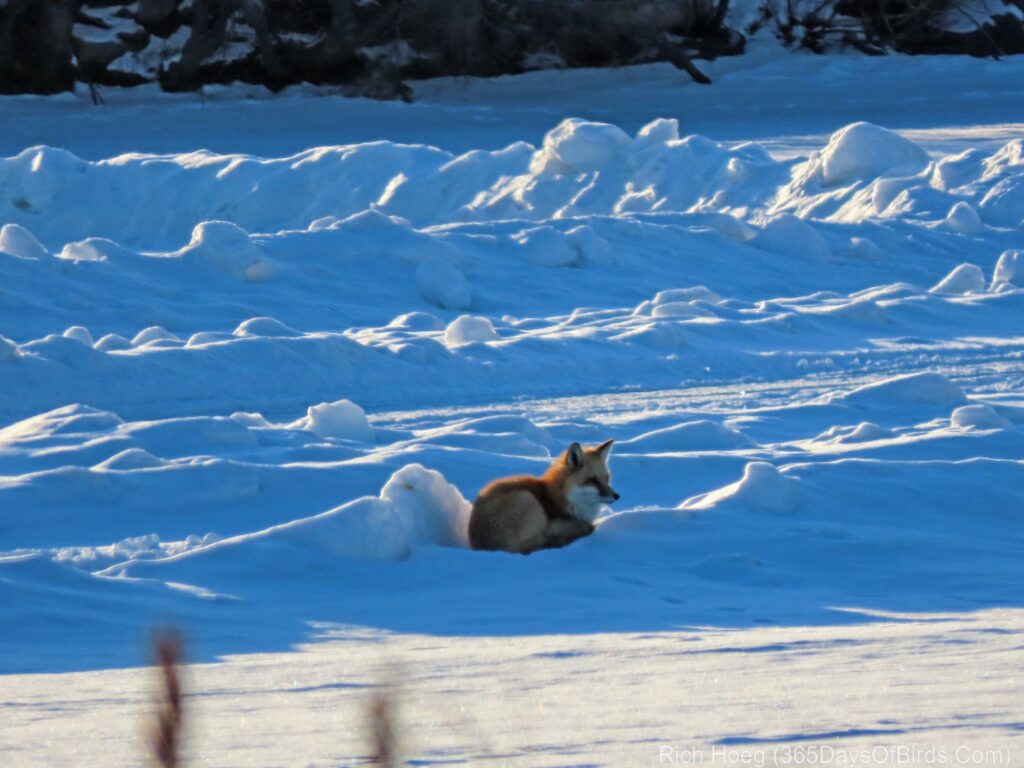
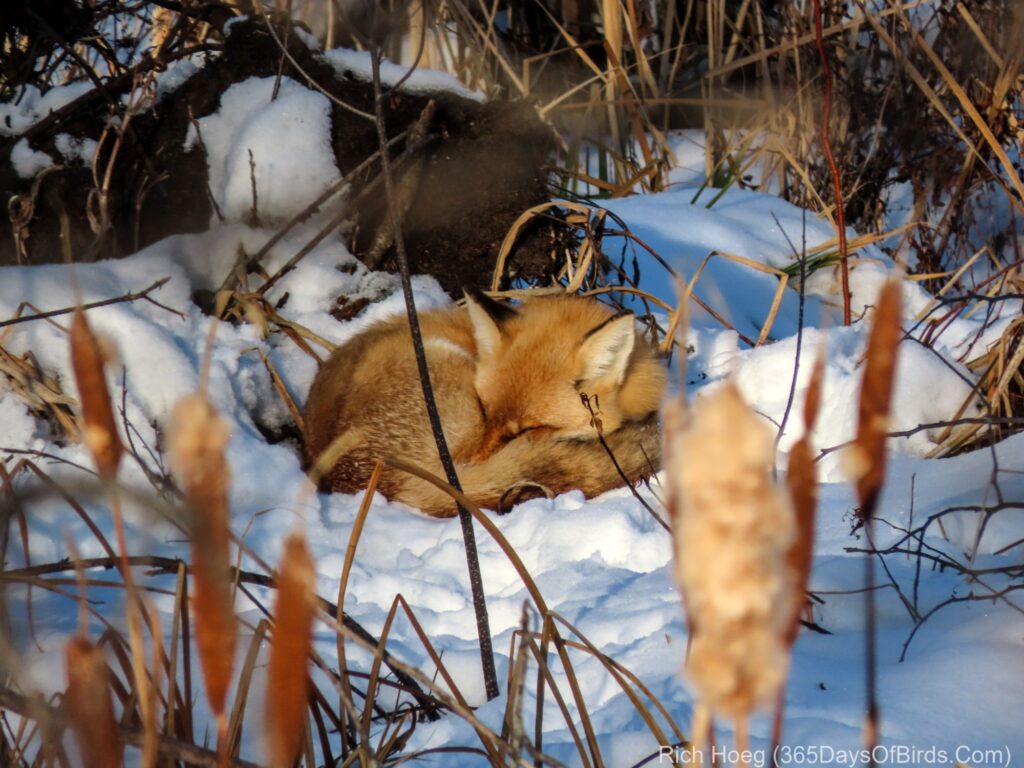
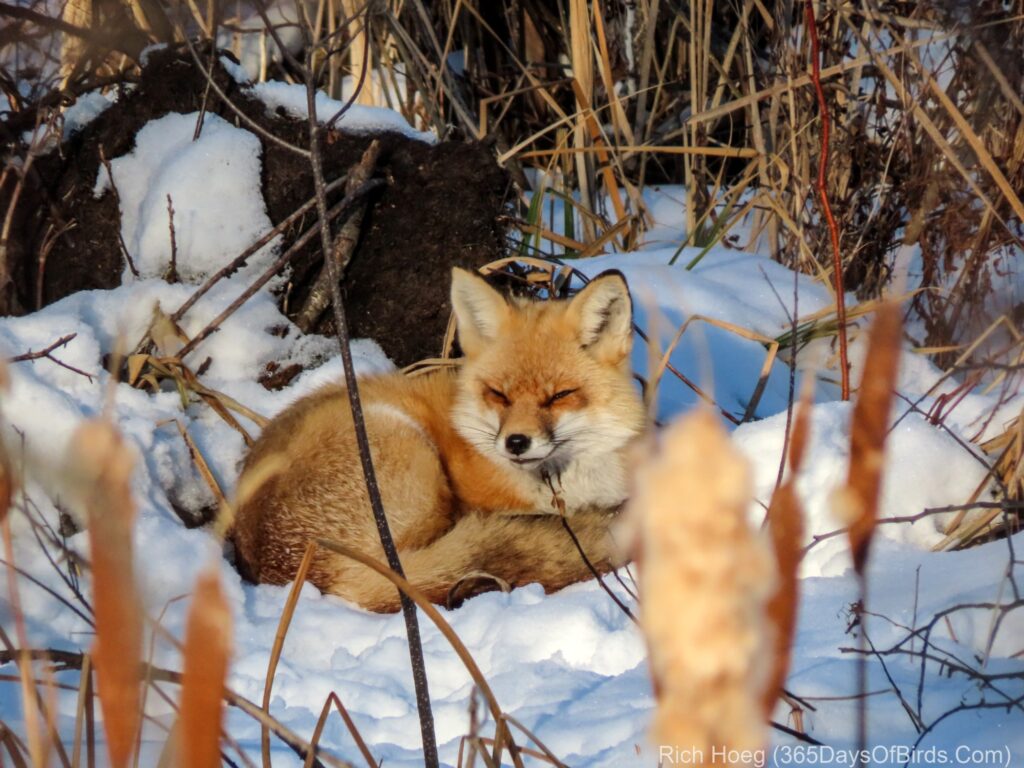
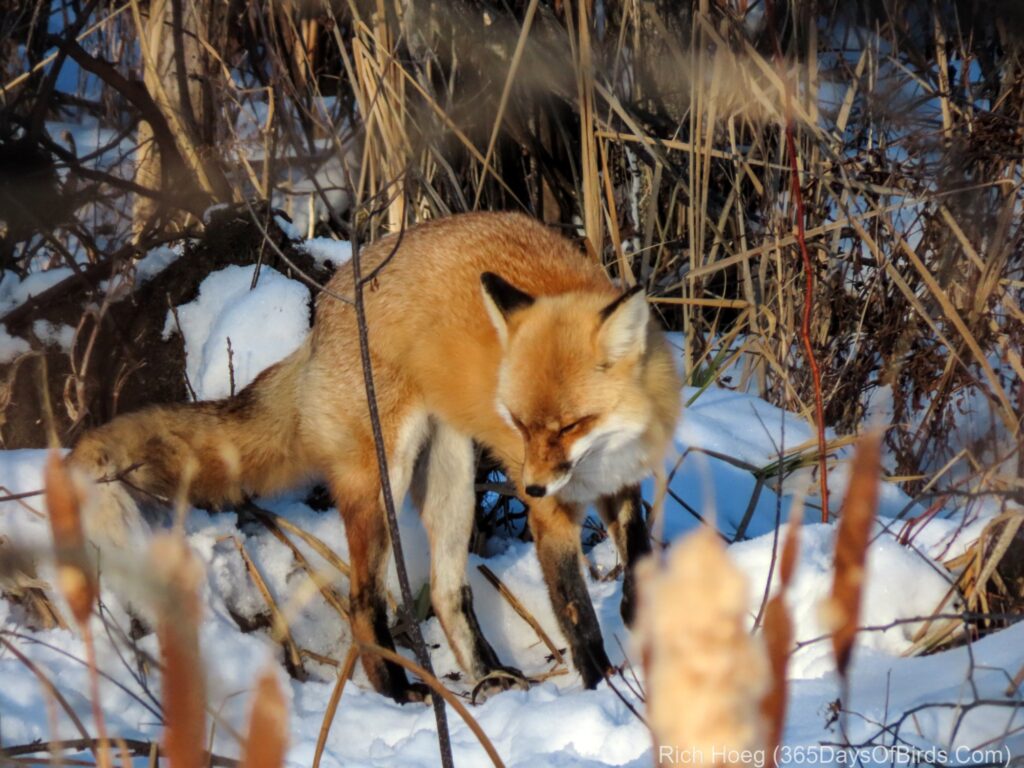
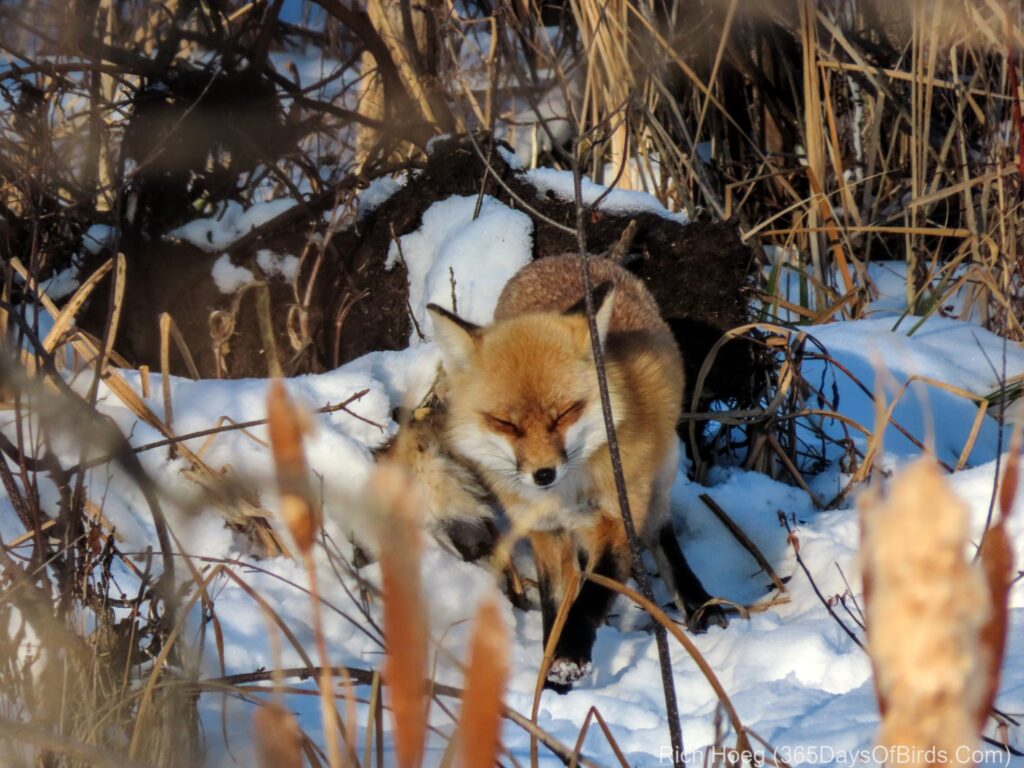
Discover more from 365 Days of Birds
Subscribe to get the latest posts sent to your email.
gorgeous photos. We live in new England and have marveled at a fox family two years in a row living in our backyard, amazing creatures. Thanks for posting some great information. Hoping they come back again this March!!
❤️💜💙💚💛